‘Terraqueous Intimacies:
To Sink, Sip, and Swim’
To Sink, Sip, and Swim’
DISC Journal
Issue 2.0: Intimacy
Issue 2.0: Intimacy
Essay & images produced for DISC– an experimental publication that explores media, technology, and environments through themed books, events, and products. DISC is editorially independent, para-institutional, and guided by an ever-changing advisory circle.
391 full color pages
6” x 9”
Launched in:
NYC Jan. 20, 2023 @ Bungee Space
LA Jan. 29, 2023@ Materials & Applications
Purchase Issue 2.0: Intimacy here.
Featuring work by:
Aaron Betsky, Abdul Qutub, Adam Maserow, Adam Miller, Adrian Silva, Alexandra Pereira Edwards, Alfredo Thiermann, Andrew Economos Miller, Andrew Holder, Ani Liu, Austin Wade Smith, Ava Violich Kennedy, Brooke Holm, Charles Weak, CoCo Tin, Corinne Botz, Courtney Richeson, David Eskenazi, Deborah Garcia, Dr. Regner Ramos, Elizabeth Galvez, Elizabeth Henaff, Elsa MH Mäki, Evan Pavka, f-architecture, Geoff Manaugh, HOME-OFFICE, Henry Weikel, Isabel Strauss, Jaffer Kolb, Jason Campbell, just practice, Kleanthis Kyriakou, Lafayette Cruise, Leah Wulfman, Lukas WinklerPrins, Malcolm Rio, Mamoun Nukumanu Friedrich-Grosvenor, Marianna Gonzalez-Cervantes, Mark Wigley, Materials & Applications, Melanie Hoff, Miles Gertler, Mindy Seu, Nahee Kim, Park Frost, Phillip Denny, Rita Rui Ting Wang, Sonia Sobrino Ralston, VERS Collab, and Wendi Yan.
Special thanks to founding editor-in-chief Ian Erickson for the invitation.
391 full color pages
6” x 9”
Launched in:
NYC Jan. 20, 2023 @ Bungee Space
LA Jan. 29, 2023@ Materials & Applications
Purchase Issue 2.0: Intimacy here.
Featuring work by:
Aaron Betsky, Abdul Qutub, Adam Maserow, Adam Miller, Adrian Silva, Alexandra Pereira Edwards, Alfredo Thiermann, Andrew Economos Miller, Andrew Holder, Ani Liu, Austin Wade Smith, Ava Violich Kennedy, Brooke Holm, Charles Weak, CoCo Tin, Corinne Botz, Courtney Richeson, David Eskenazi, Deborah Garcia, Dr. Regner Ramos, Elizabeth Galvez, Elizabeth Henaff, Elsa MH Mäki, Evan Pavka, f-architecture, Geoff Manaugh, HOME-OFFICE, Henry Weikel, Isabel Strauss, Jaffer Kolb, Jason Campbell, just practice, Kleanthis Kyriakou, Lafayette Cruise, Leah Wulfman, Lukas WinklerPrins, Malcolm Rio, Mamoun Nukumanu Friedrich-Grosvenor, Marianna Gonzalez-Cervantes, Mark Wigley, Materials & Applications, Melanie Hoff, Miles Gertler, Mindy Seu, Nahee Kim, Park Frost, Phillip Denny, Rita Rui Ting Wang, Sonia Sobrino Ralston, VERS Collab, and Wendi Yan.
Special thanks to founding editor-in-chief Ian Erickson for the invitation.
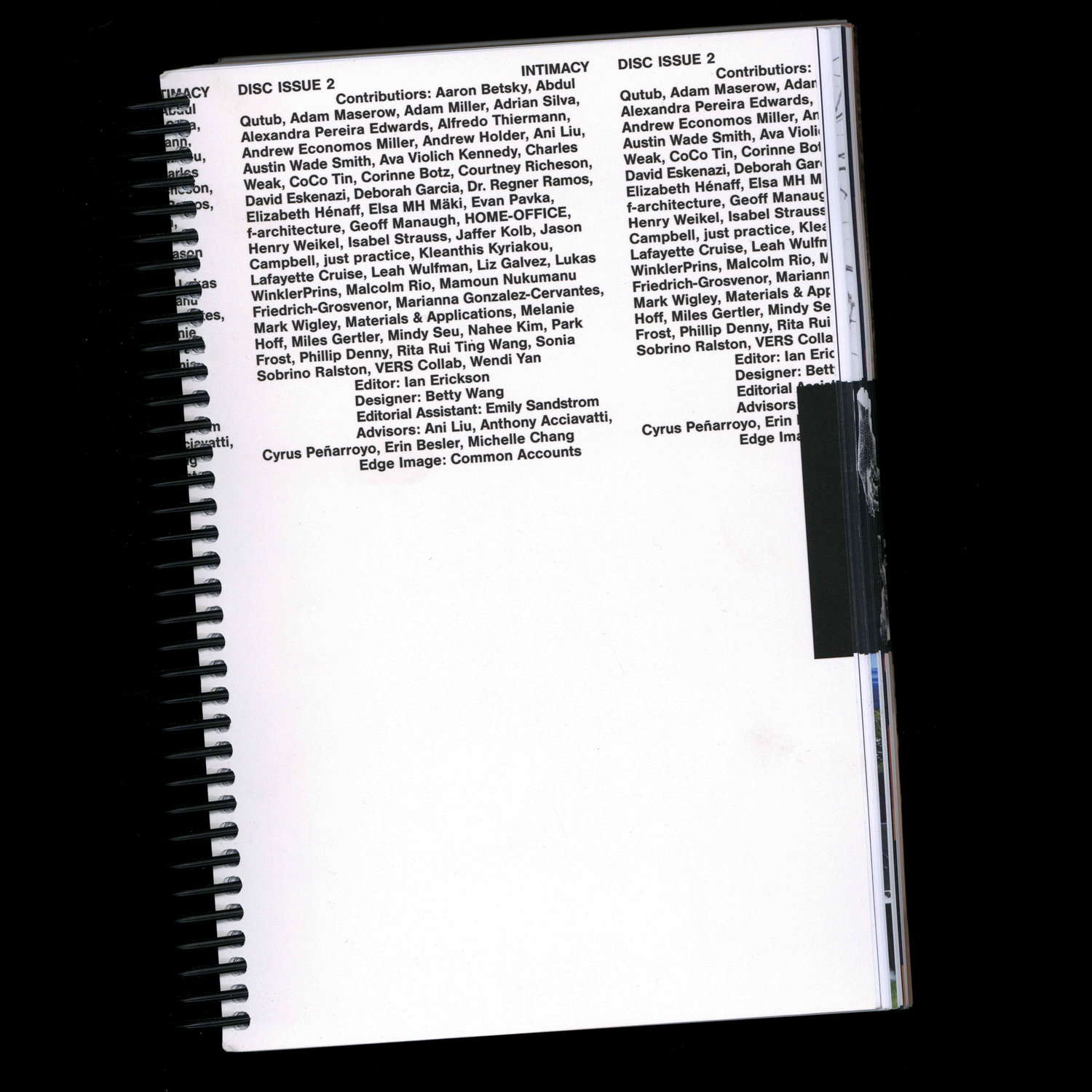


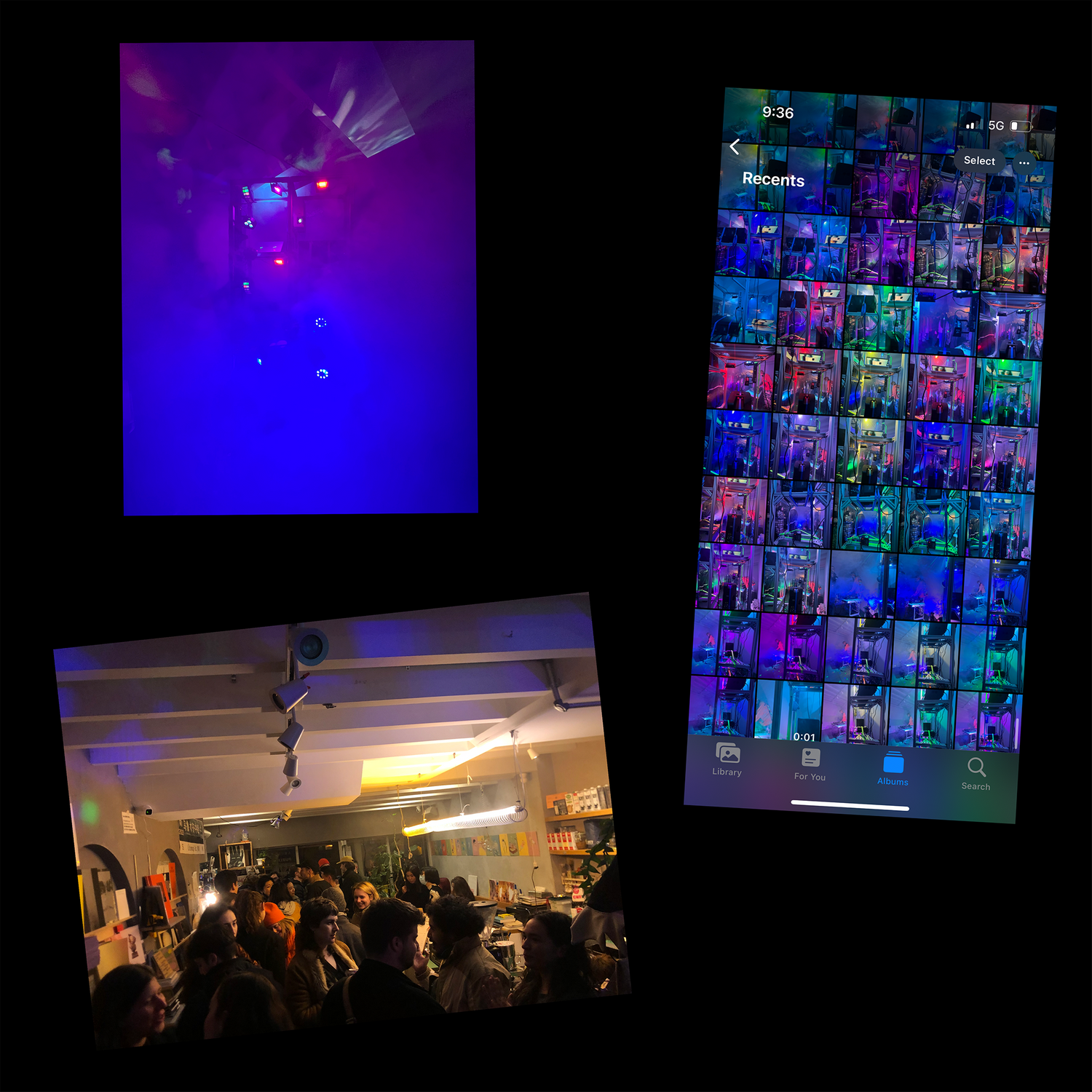
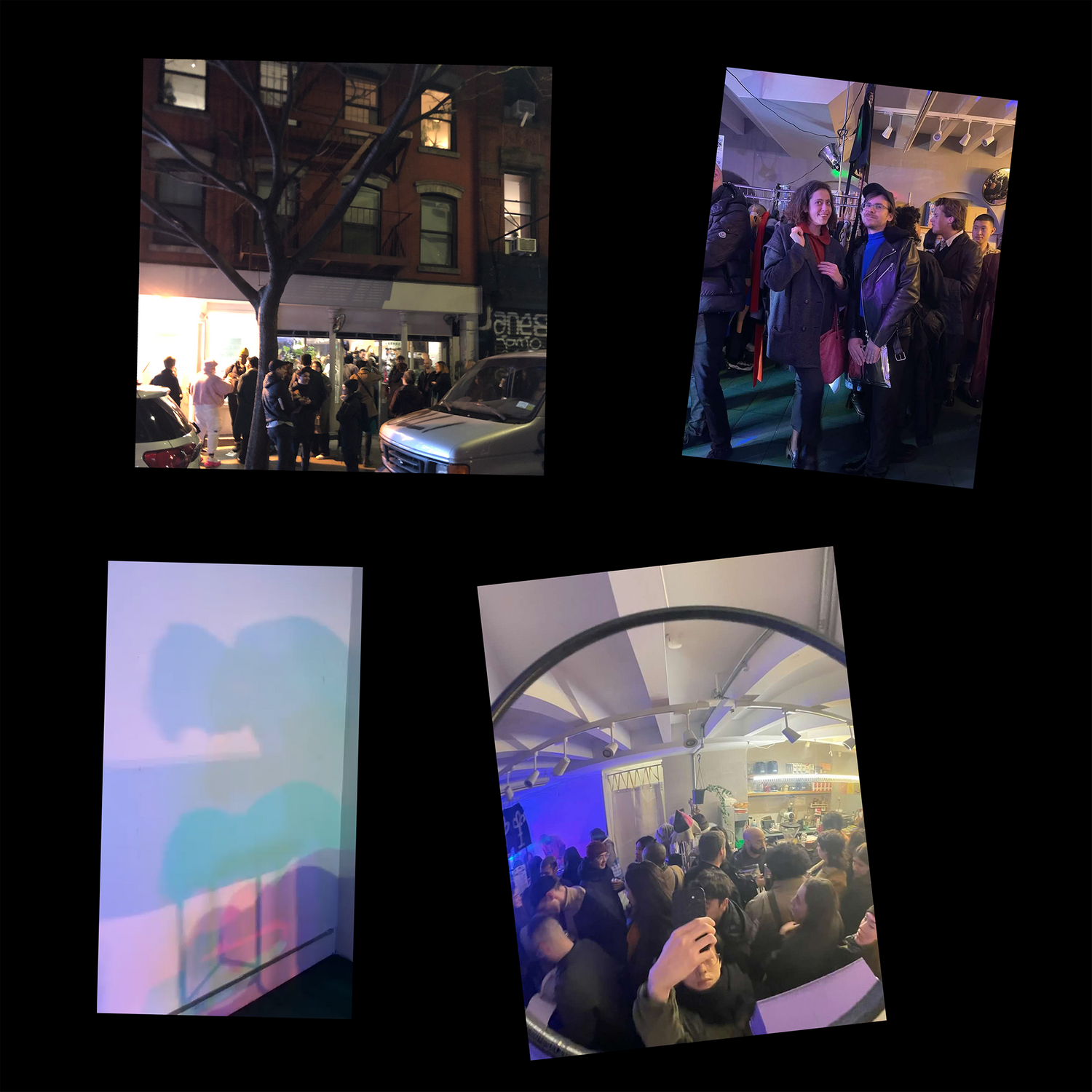
Oceanic Thought is a 1000 word text for Rumor Reivew, written after visiting Museum of Art, Architecure, and Technology in the summer of 2022.
‘Rumor is a monthly publication and installation. Each Rumor reviews* a work of architecture** and comes with an interactive launch intervention in or around the School of Architecture at Princeton University. Rumors spread via email, across desks, and on air. They’re forwarded, or printed, folded, and passed as notes.
*Working in the language of critiques and proposals rather than abstract speculation, each issue takes on a single work of architecture, reviewed by one or more authors.
**What is a work of architecture is a matter of language. Rumor defines it as anything that fits together separate parts, or assembles materials into a structure. It is a piece of the world, physically constructed in the 21st century.’
– Rumor Editors
‘Rumor is a monthly publication and installation. Each Rumor reviews* a work of architecture** and comes with an interactive launch intervention in or around the School of Architecture at Princeton University. Rumors spread via email, across desks, and on air. They’re forwarded, or printed, folded, and passed as notes.
*Working in the language of critiques and proposals rather than abstract speculation, each issue takes on a single work of architecture, reviewed by one or more authors.
**What is a work of architecture is a matter of language. Rumor defines it as anything that fits together separate parts, or assembles materials into a structure. It is a piece of the world, physically constructed in the 21st century.’
– Rumor Editors
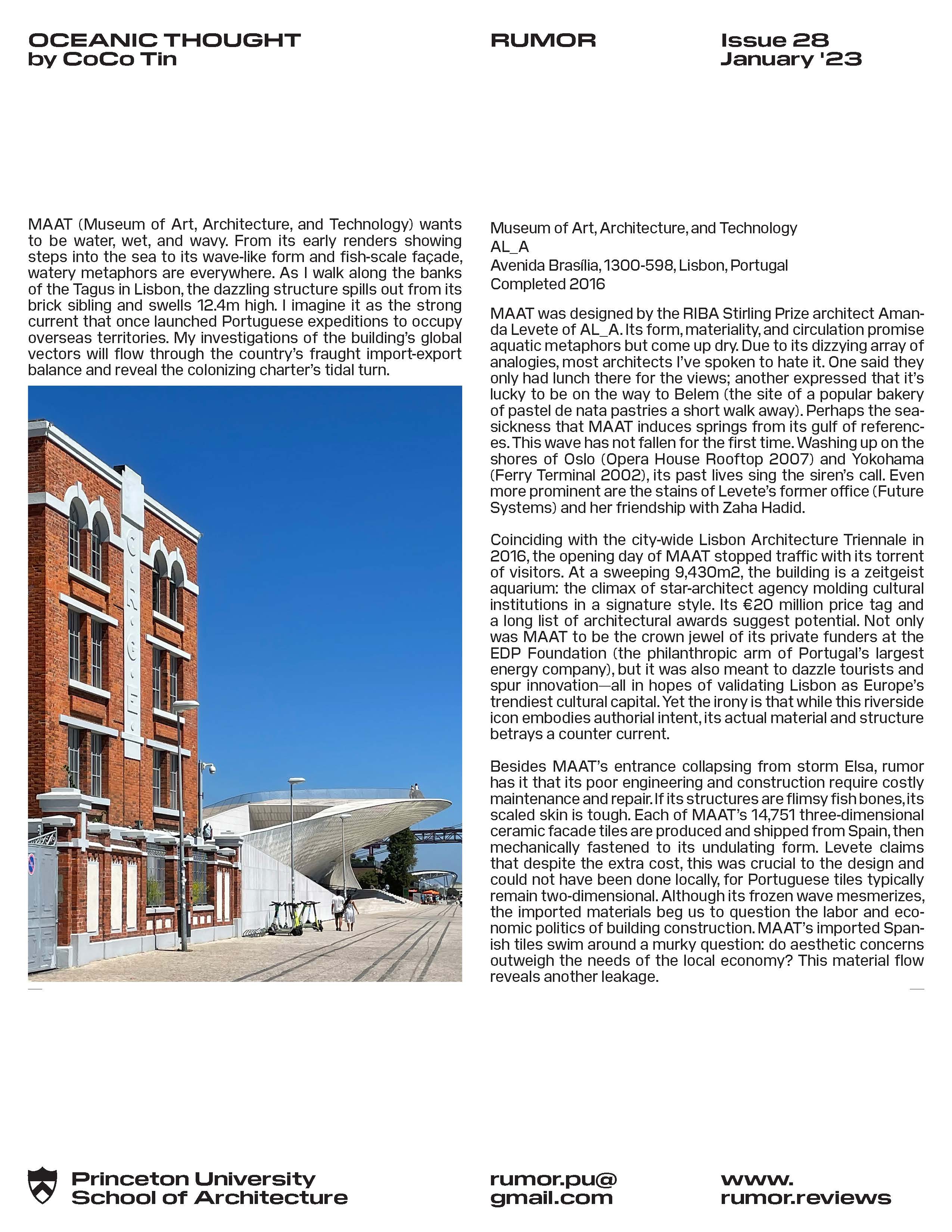

‘Caring for Burnout in Hong Kong 2.0’
Cornell University
Journal of Architecture
Journal of Architecture
16 x 23 cm/ 6,25 x 9 in.
428 pages
Illustrations in color
Softcover
“Organized around a timeline that demonstrates the range of "presents" and "afters" we find ourselves contemplating, this volume of the Cornell Journal of Architecture considers our terrestrial occupations from a variety of real and imagined perspectives, from the prehistoric to the future-imperfect. It seems that--with increased urgency--we are more frequently finding ourselves grasping for an "after," especially as we face futures with apprehension. "After" exists at different scales of time and context: there's after an instant, after a day, after an era. And each after contains both a conclusion and a beginning. This volume of the Cornell Journal of Architecture looks at a vast range of the "afters" we architects find ourselves confronting, and offers not just warnings, but solutions; not just reminders, but projections. Because, while we humans are obliged to stand squarely within the present, as architects we're equally obliged to cast our work into a hereafter that can be only loosely understood. And then we can hope that, in the aftermath, our intentions bear some resemblance to their consequences. With Contributions of a vast selection of architects, artists, designers, historians, and geoscientists, including Peter van Assche, James Biber, Olalekan Jeyifous, Michael Murphy with Jha D Williams, Felix Heisel, Jacques Ferrier, Common Accounts, Meredith Miller and T+E+A+M, and many others, representing an extensive diversity of approaches for identifying techniques of transcending pasts and presents.”
– CoJA editors
428 pages
Illustrations in color
Softcover
“Organized around a timeline that demonstrates the range of "presents" and "afters" we find ourselves contemplating, this volume of the Cornell Journal of Architecture considers our terrestrial occupations from a variety of real and imagined perspectives, from the prehistoric to the future-imperfect. It seems that--with increased urgency--we are more frequently finding ourselves grasping for an "after," especially as we face futures with apprehension. "After" exists at different scales of time and context: there's after an instant, after a day, after an era. And each after contains both a conclusion and a beginning. This volume of the Cornell Journal of Architecture looks at a vast range of the "afters" we architects find ourselves confronting, and offers not just warnings, but solutions; not just reminders, but projections. Because, while we humans are obliged to stand squarely within the present, as architects we're equally obliged to cast our work into a hereafter that can be only loosely understood. And then we can hope that, in the aftermath, our intentions bear some resemblance to their consequences. With Contributions of a vast selection of architects, artists, designers, historians, and geoscientists, including Peter van Assche, James Biber, Olalekan Jeyifous, Michael Murphy with Jha D Williams, Felix Heisel, Jacques Ferrier, Common Accounts, Meredith Miller and T+E+A+M, and many others, representing an extensive diversity of approaches for identifying techniques of transcending pasts and presents.”
– CoJA editors

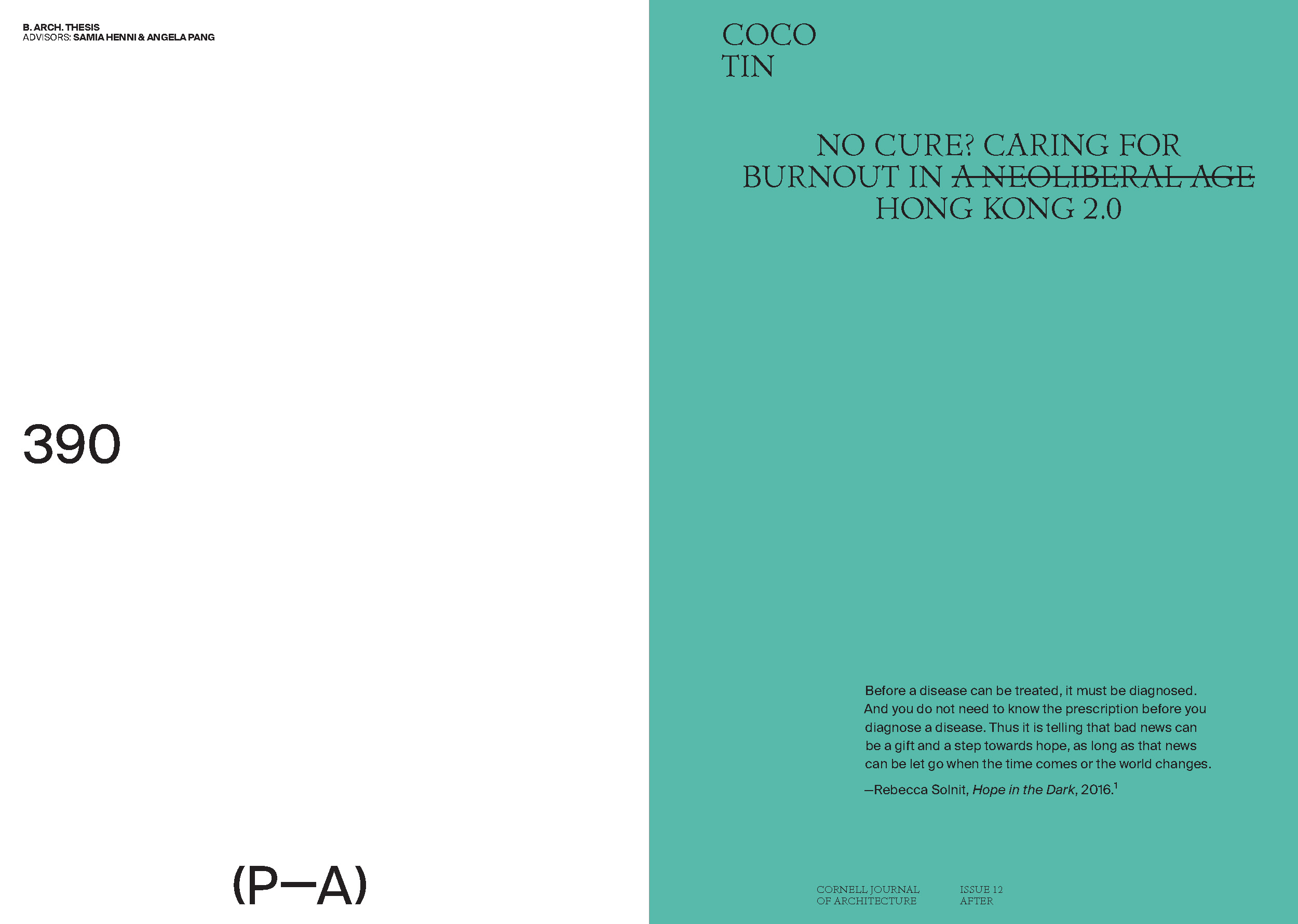
Mimosa Pudica, also known as the sensitive plant, is an easy opening that can help us better engage with multi-species beings in everyday life and the design process. Upon touch or stimulation, the plant’s compound leaves fold inwards; water is forced out of the cell vacuoles, producing a loss of cell pressure and collapsing. Yet, after a short period of roughly 30 minutes, the leaves of Mimosas re-open, a brave and generous act, never remaining closed for too long or forfeiting from fatigue.
Amidst societal ecological amnesia, plant blindness clouds our relationship to ecology.1 Even in our increasingly sight-based (microscopic) world, humans remain constrained in their perception. Touch plays a crucial role in lifting the fog of plant blindness. In 1998, James Wandersee and Elizabeth Schussler defined plant blindness as ‘the inability to see or notice the plants in one’s own environment, leading to the inability to recognize the importance of plants in the biosphere and in human affairs... an inability to appreciate the aesthetic and unique biological features of plants, and the misguided, anthropocentric ranking of plants as inferior to animal, leading to the erroneous conclusion that they are unworthy of human consideration’.2
1 Ingrid M. Parker, “Remembering in Our Amnesia, Seeing in Our Blindness,” in Arts of Living on a Damaged Planet: Ghosts of the Anthropocene, ed. Anna Lowenhaupt Tsing et al. (Minneapolis: University of Minnesota Press, 2017), pp. 155-167.
2 William Allen. "Plant Blindness." BioScience 53, no. 10 (2003): 926.
Amidst societal ecological amnesia, plant blindness clouds our relationship to ecology.1 Even in our increasingly sight-based (microscopic) world, humans remain constrained in their perception. Touch plays a crucial role in lifting the fog of plant blindness. In 1998, James Wandersee and Elizabeth Schussler defined plant blindness as ‘the inability to see or notice the plants in one’s own environment, leading to the inability to recognize the importance of plants in the biosphere and in human affairs... an inability to appreciate the aesthetic and unique biological features of plants, and the misguided, anthropocentric ranking of plants as inferior to animal, leading to the erroneous conclusion that they are unworthy of human consideration’.2
1 Ingrid M. Parker, “Remembering in Our Amnesia, Seeing in Our Blindness,” in Arts of Living on a Damaged Planet: Ghosts of the Anthropocene, ed. Anna Lowenhaupt Tsing et al. (Minneapolis: University of Minnesota Press, 2017), pp. 155-167.
2 William Allen. "Plant Blindness." BioScience 53, no. 10 (2003): 926.
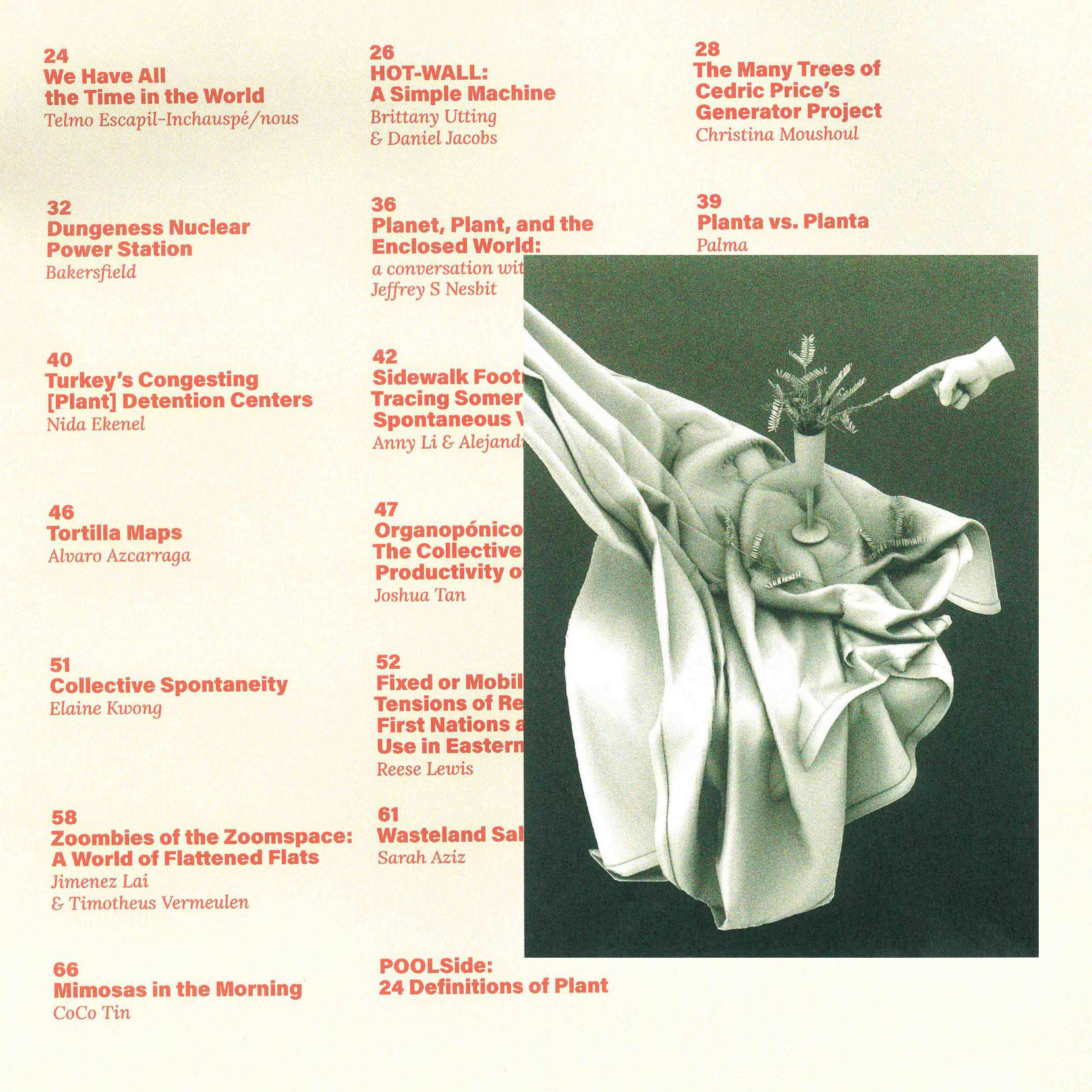
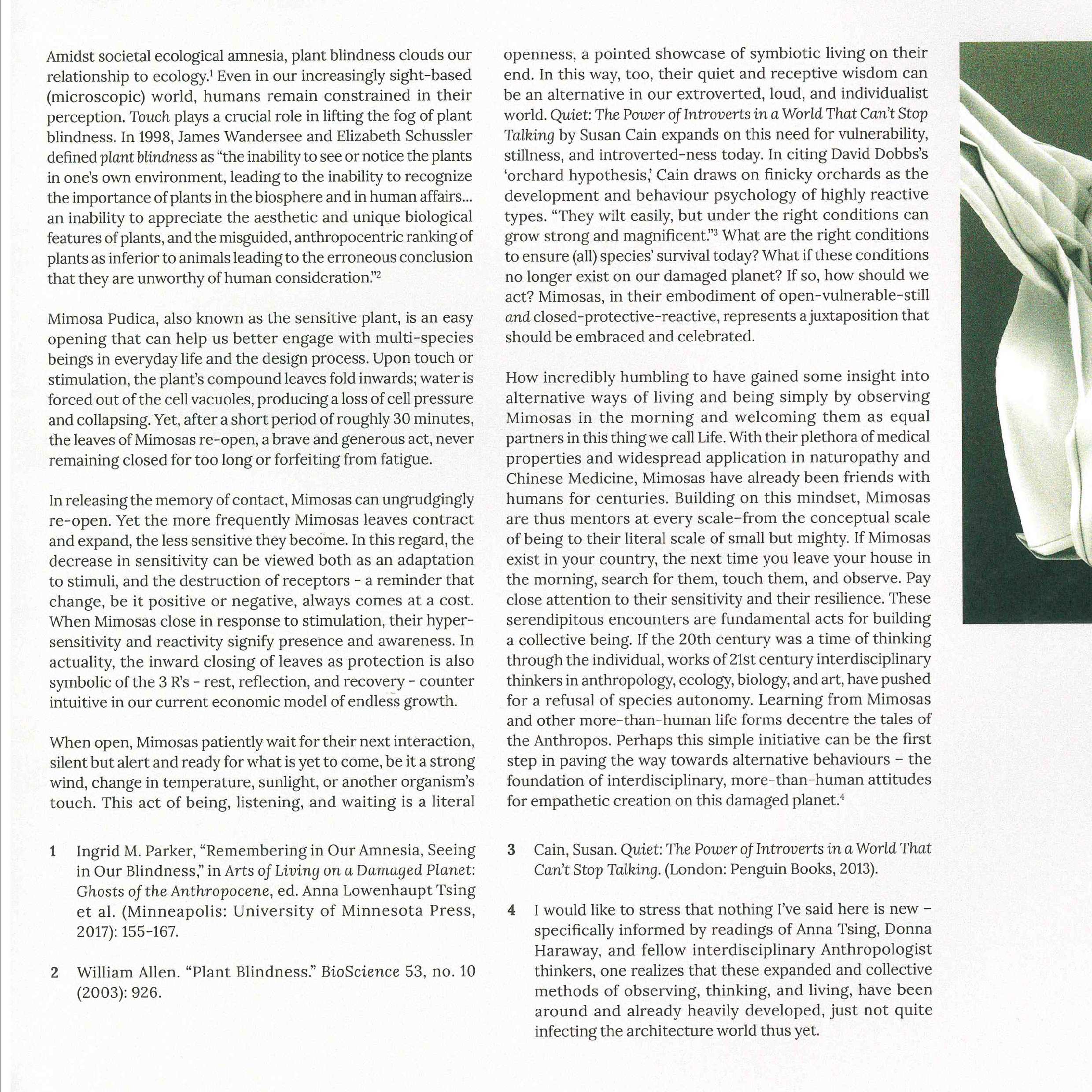
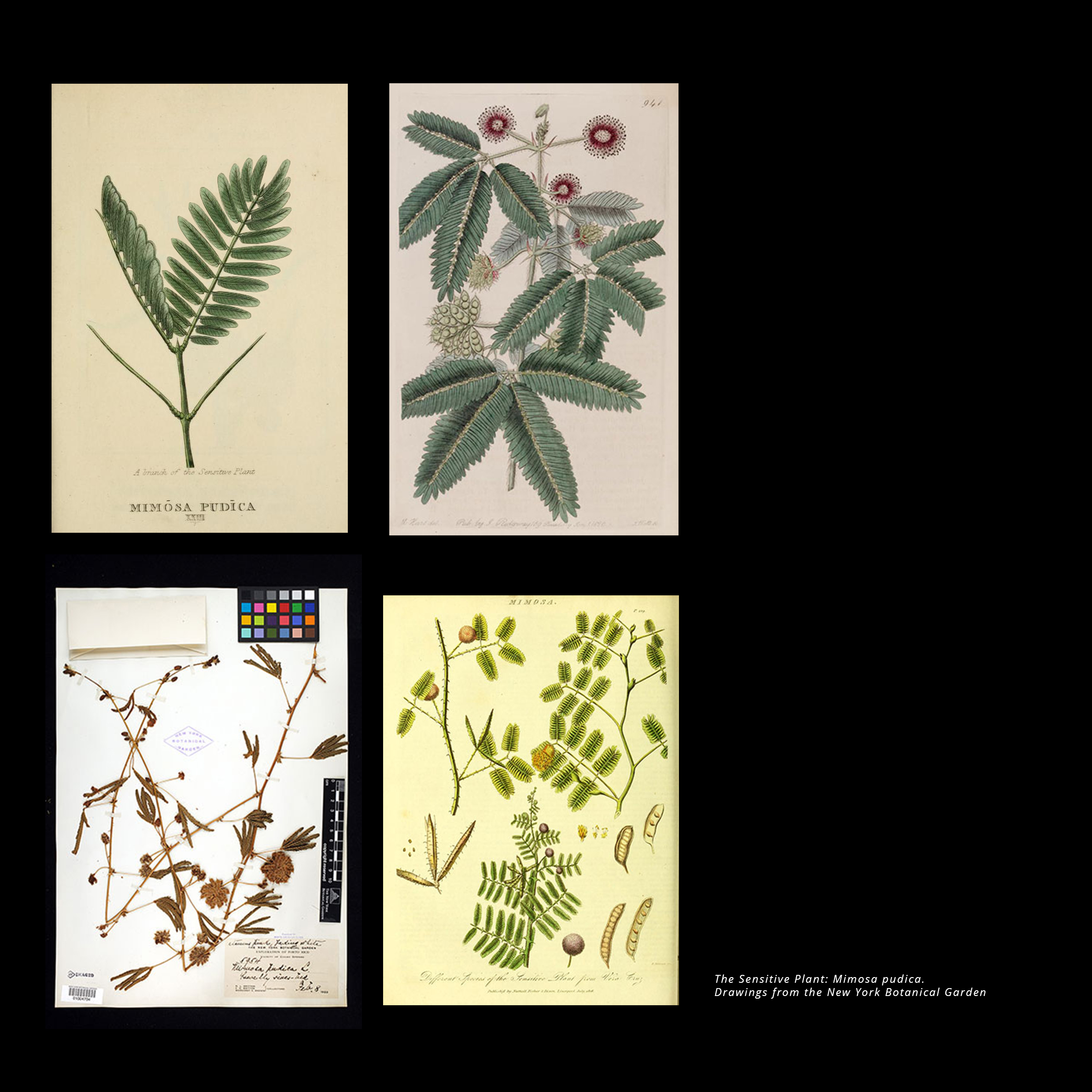

‘Invisible Agents:
SARS in Hong Kong’
SARS in Hong Kong’
Informa UPR
Vol. 13 Urban Disruptors
Vol. 13 Urban Disruptors
Essay for Informa: Urban Disruptors, Vol. 13, 2020-21, Peer Reviewed Journal Publication of University of Puerto Rico School of Architecture.
Shaped in reaction to tuberculosis and cholera, nineteenth century cities most evidently embody the coupling of urbanism and disease. Today, amidst technological advances of antibiotics and hyper connectivity, SARS (as the first global health alert of the twenty-first century) highlights how cities continue to be mutated by pandemics. Originating from civet cats in the Guangdong Province of China, the epidemic spread globally through Hong Kong to more than 29 countries worldwide. Lasting only 6 months, SARS cost the world roughly $40 billion. Rather than increasing border control as a method to contain disease, this investigation argues that multi-centred cities with fragmented borders, are crucial for the formation of new pan-alliances against outbreaks. Connectivity is the causeof SARS, the result of SARS, but also the method for controllingSARS. Operating in a Chinese cultural context, post-SARS urbanism addresses the para-doxical benefit of connectivity as a tool to combat future epidemics.
Shaped in reaction to tuberculosis and cholera, nineteenth century cities most evidently embody the coupling of urbanism and disease. Today, amidst technological advances of antibiotics and hyper connectivity, SARS (as the first global health alert of the twenty-first century) highlights how cities continue to be mutated by pandemics. Originating from civet cats in the Guangdong Province of China, the epidemic spread globally through Hong Kong to more than 29 countries worldwide. Lasting only 6 months, SARS cost the world roughly $40 billion. Rather than increasing border control as a method to contain disease, this investigation argues that multi-centred cities with fragmented borders, are crucial for the formation of new pan-alliances against outbreaks. Connectivity is the causeof SARS, the result of SARS, but also the method for controllingSARS. Operating in a Chinese cultural context, post-SARS urbanism addresses the para-doxical benefit of connectivity as a tool to combat future epidemics.


